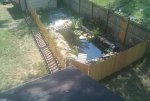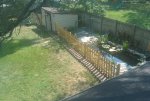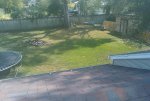- Joined
- Nov 11, 2010
- Messages
- 4,071
- Reaction score
- 4,025
- Location
- Chicago Area
- Hardiness Zone
- 5b
- Country

CE. I found this info on Water Hyacinths. I think it would be interesting to look at the roots. If your well water is too acidic then that could explain the problem. I found the following excerpt from a nursery that grows floaters. http://www.woodbridgeponds.com/echo-nurseries/
Water Hyacinths are also a great indicator of your pond pH conditions. Have a look at the roots that dangle underneath the plant. They should be white with multiple hair roots.
If they are soft and brown then the pond is too alkaline, if they are black and hairless than the pond is too acid. A nylon stocking filled with crushed Oyster shells is a cheap and easy solution to buffering the pond. The Calcium Carbonate in the shells only dissolves the presence of acid so as the pH dips they naturally raise the pH until the environment has turned neutral and they stop dissolving.
Also it was interesting that I was able to see a steady stream of bubbles coming from my oxygenator plants today. We hit 101 degrees and the sun was really hot so I didn't know if that had anything to do with it.
Water Hyacinths are also a great indicator of your pond pH conditions. Have a look at the roots that dangle underneath the plant. They should be white with multiple hair roots.
If they are soft and brown then the pond is too alkaline, if they are black and hairless than the pond is too acid. A nylon stocking filled with crushed Oyster shells is a cheap and easy solution to buffering the pond. The Calcium Carbonate in the shells only dissolves the presence of acid so as the pH dips they naturally raise the pH until the environment has turned neutral and they stop dissolving.
Also it was interesting that I was able to see a steady stream of bubbles coming from my oxygenator plants today. We hit 101 degrees and the sun was really hot so I didn't know if that had anything to do with it.






